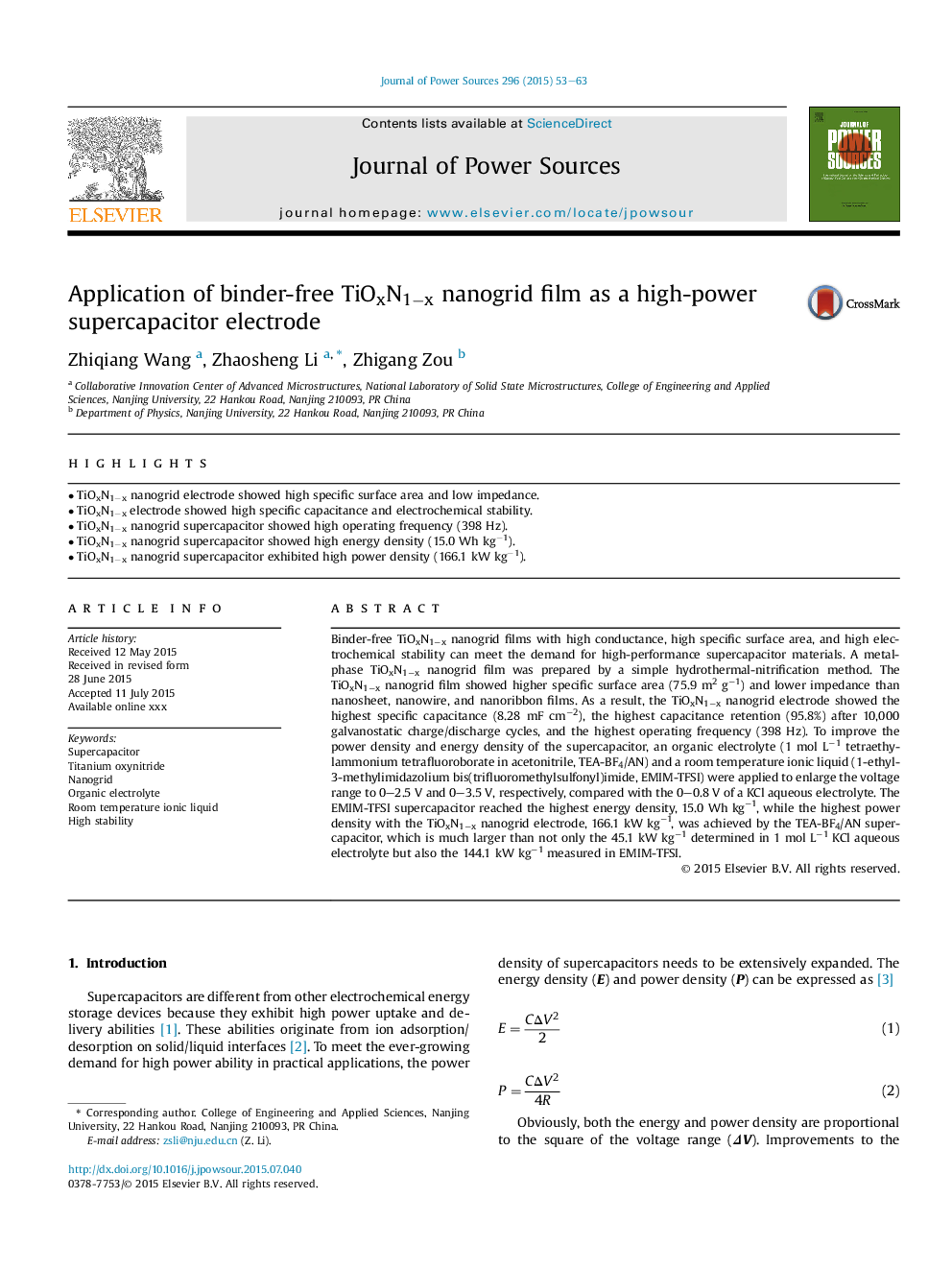| Article ID | Journal | Published Year | Pages | File Type |
|---|---|---|---|---|
| 7730739 | Journal of Power Sources | 2015 | 11 Pages |
Abstract
Binder-free TiOxN1âx nanogrid films with high conductance, high specific surface area, and high electrochemical stability can meet the demand for high-performance supercapacitor materials. A metal-phase TiOxN1âx nanogrid film was prepared by a simple hydrothermal-nitrification method. The TiOxN1âx nanogrid film showed higher specific surface area (75.9 m2 gâ1) and lower impedance than nanosheet, nanowire, and nanoribbon films. As a result, the TiOxN1âx nanogrid electrode showed the highest specific capacitance (8.28 mF cmâ2), the highest capacitance retention (95.8%) after 10,000 galvanostatic charge/discharge cycles, and the highest operating frequency (398 Hz). To improve the power density and energy density of the supercapacitor, an organic electrolyte (1 mol Lâ1 tetraethylammonium tetrafluoroborate in acetonitrile, TEA-BF4/AN) and a room temperature ionic liquid (1-ethyl-3-methylimidazolium bis(trifluoromethylsulfonyl)imide, EMIM-TFSI) were applied to enlarge the voltage range to 0-2.5 V and 0-3.5 V, respectively, compared with the 0-0.8 V of a KCl aqueous electrolyte. The EMIM-TFSI supercapacitor reached the highest energy density, 15.0 Wh kgâ1, while the highest power density with the TiOxN1âx nanogrid electrode, 166.1 kW kgâ1, was achieved by the TEA-BF4/AN supercapacitor, which is much larger than not only the 45.1 kW kgâ1 determined in 1 mol Lâ1 KCl aqueous electrolyte but also the 144.1 kW kgâ1 measured in EMIM-TFSI.
Keywords
Related Topics
Physical Sciences and Engineering
Chemistry
Electrochemistry
Authors
Zhiqiang Wang, Zhaosheng Li, Zhigang Zou,
